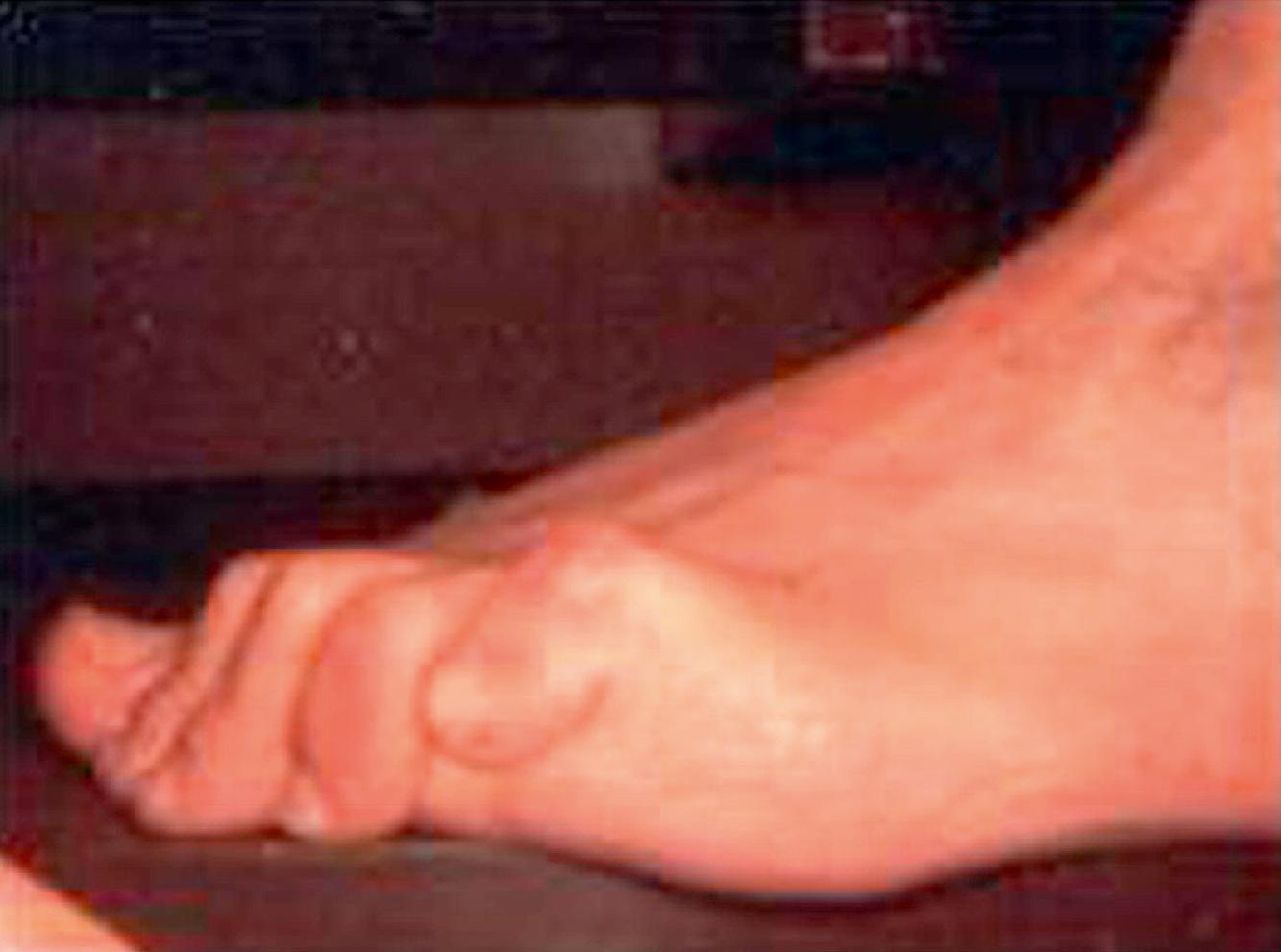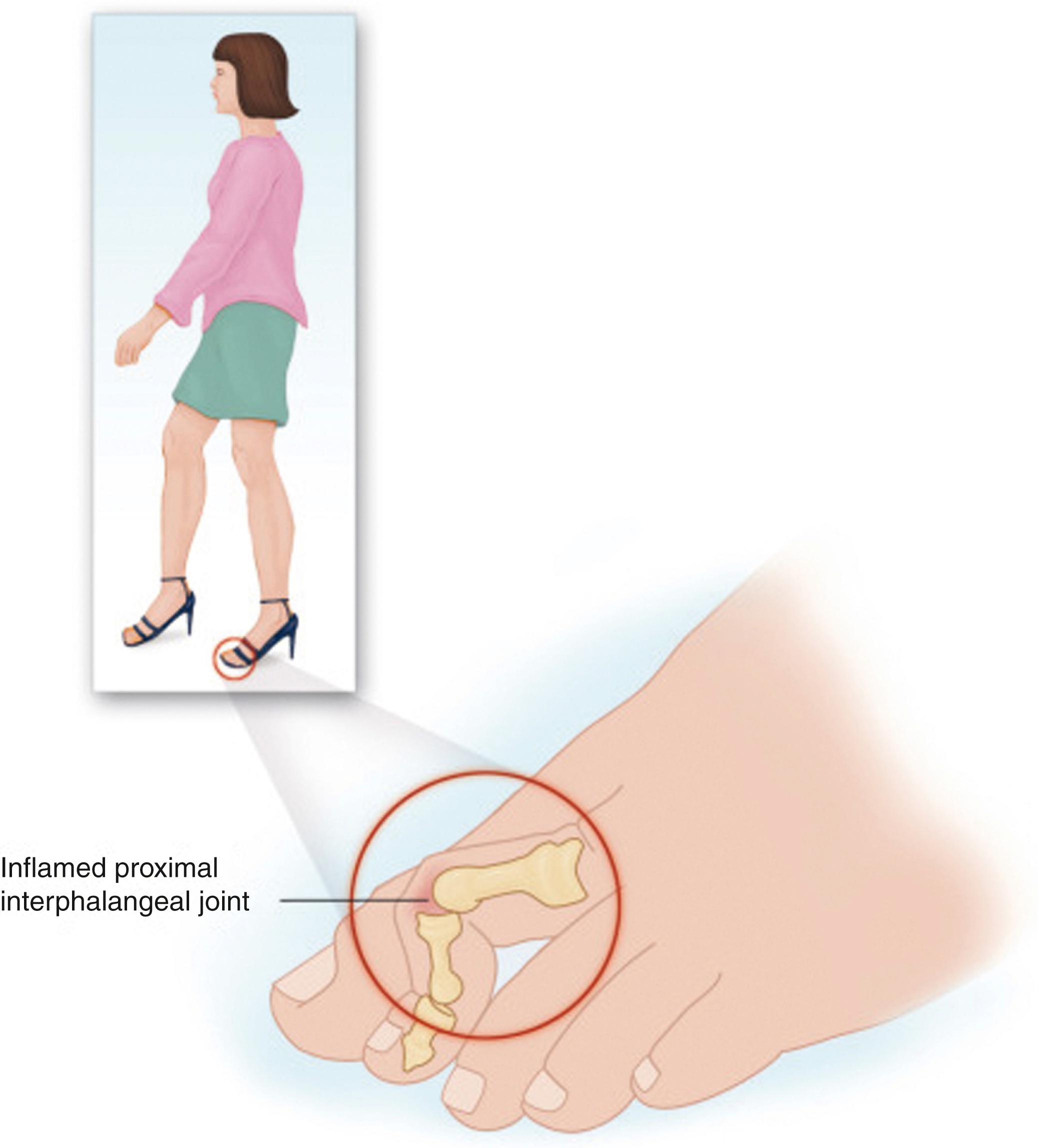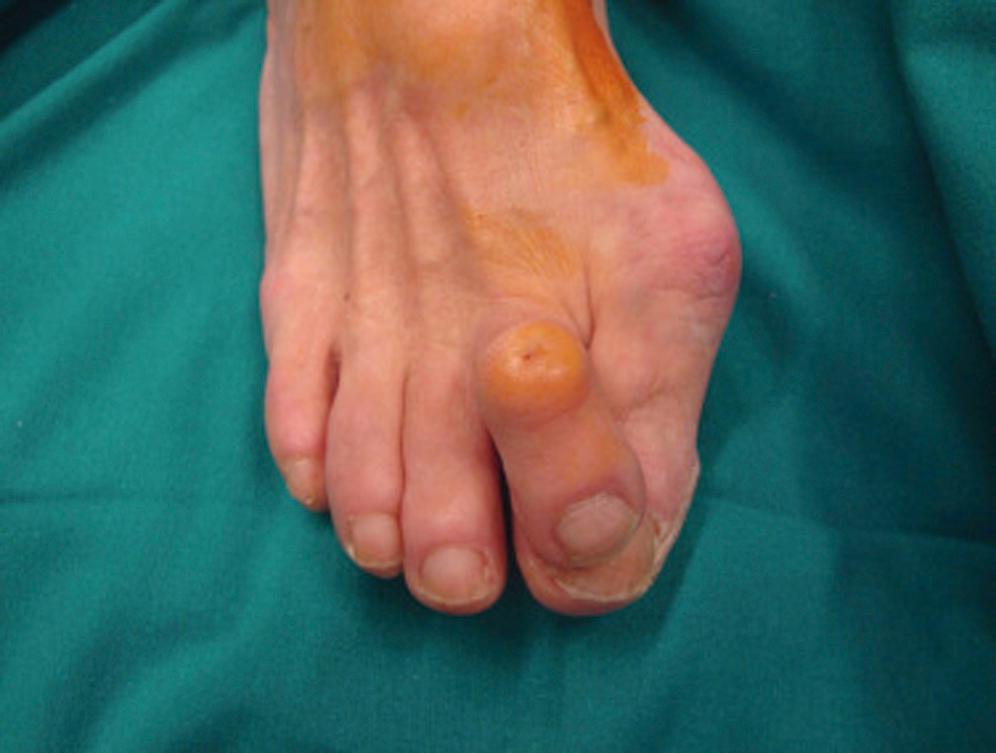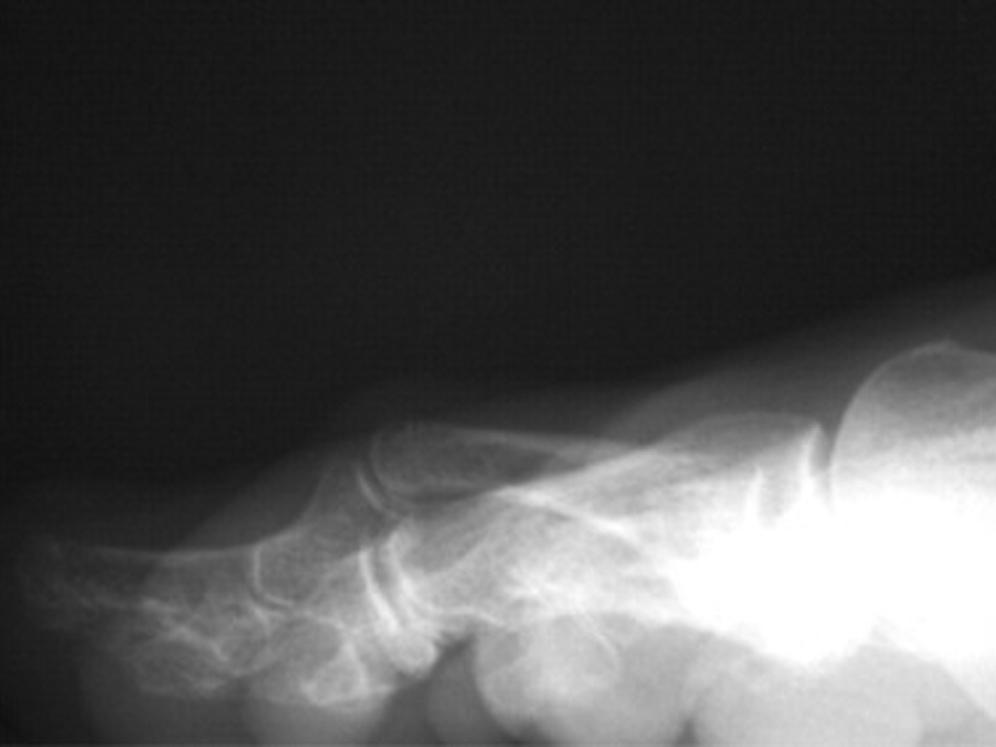Physical Address
304 North Cardinal St.
Dorchester Center, MA 02124
The term hammer toe refers to a constellation of symptoms including a painful flexion deformity of the proximal interphalangeal joint with the middle and distal phalanges flexed down onto the proximal phalange ( Fig. 196.1 ). The second toe is affected most often, and the condition usually is bilateral. Like hallux valgus deformity, hammer toe deformity usually is a result of wearing shoes that are too tight, although trauma also has been implicated. Wearing high-heeled shoes may exacerbate the problem ( Fig. 196.2 ).


As with a bunion and bunionette, the hammer toe deformity occurs more often in women. The development of an inflamed adventitious bursa may accompany hammer toe formation and may contribute to the patient’s pain ( Fig. 196.3 ). A callus overlying the plantar surface of these bony prominences also usually is present.

The majority of patients with hammer toe report pain localized to the affected proximal interphalangeal joint and the inability to get shoes to fit. Walking makes the pain worse; rest and heat provide some relief. The pain is constant, is characterized as aching, and may interfere with sleep. Some patients report a grating or popping sensation with use of the joint, and crepitus may be present on physical examination. In addition to the previously mentioned pain, patients with hammer toe develop a characteristic deformity consisting of a painful flexion deformity of the proximal interphalangeal joint with the middle and distal phalanges flexed down onto the proximal phalange.
Plain radiographs are indicated for all patients with hammer toe pain ( Fig. 196.4 ). On the basis of the patient’s clinical presentation, additional testing may be indicated, including complete blood cell count, sedimentation rate, and antinuclear antibody testing. Magnetic resonance imaging of the toe is indicated if joint instability, occult mass, or tumor is suggested.

Each toe joint has its own capsule. The articular surface of these joints is covered with hyaline cartilage, which is susceptible to arthritis. The toe joint capsules are lined with a synovial membrane that attaches to the articular cartilage. The deep transverse ligaments connect the joints of the 5 toes and provide the majority of strength to the toe joints. The muscles of the toe joint and their attaching tendons are susceptible to trauma and to wear and tear from overuse and misuse.
Become a Clinical Tree membership for Full access and enjoy Unlimited articles
If you are a member. Log in here